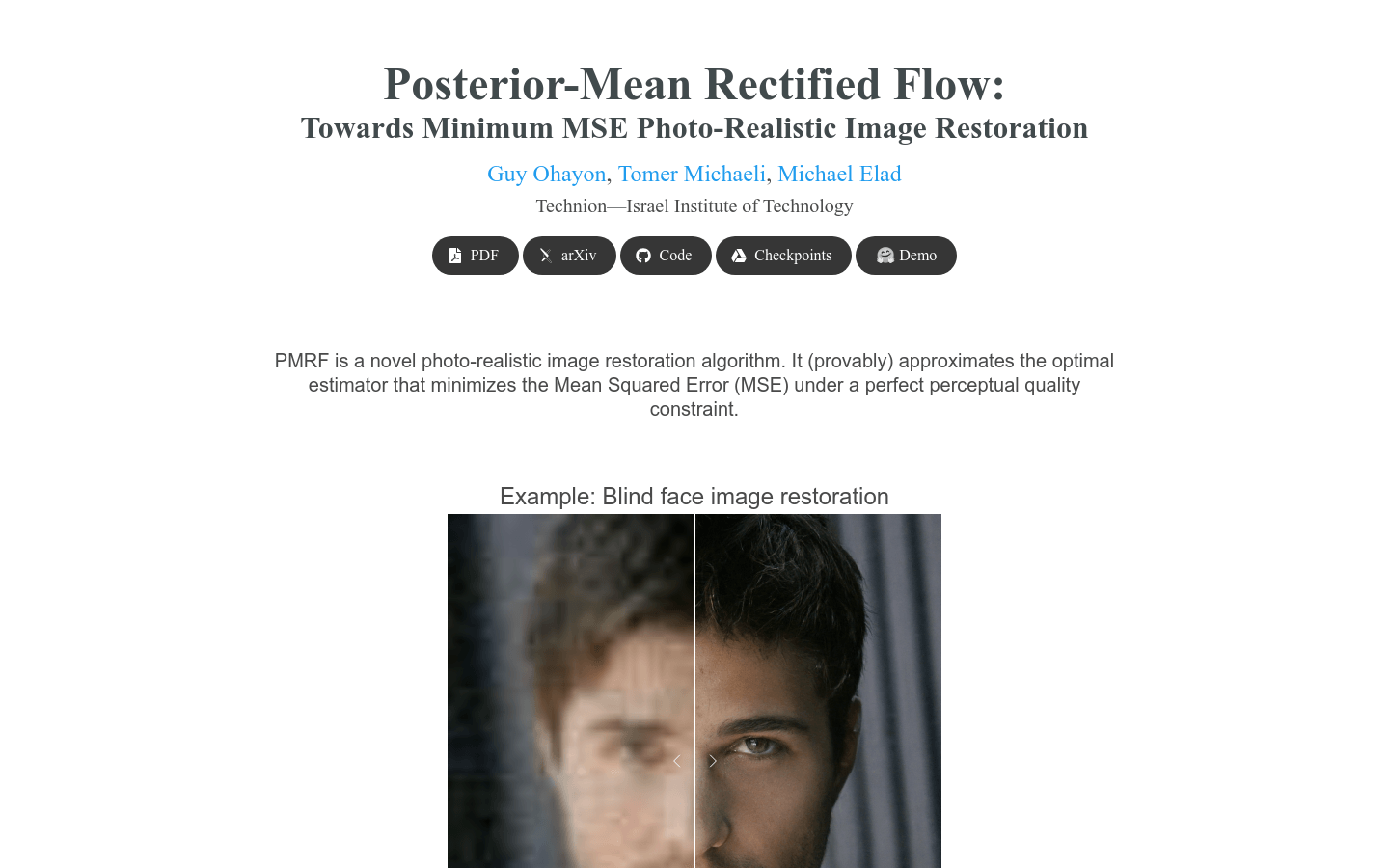

Posterior Mean Rectified Flow
Overview :
Posterior-Mean Rectified Flow (PMRF) is an innovative image restoration algorithm that minimizes mean square error (MSE) while ensuring the realism of images by optimizing posterior mean predictions and the rectified flow model. The PMRF algorithm is both simple and efficient, theoretically grounded in optimizing posterior mean predictions (minimum mean square error estimates) to match the true image distribution. It excels in image restoration tasks, effectively tackling various degradation issues such as noise and blurring, while providing good perceptual quality.
Target Users :
Target audience includes researchers and developers in the field of image processing, as well as businesses and individual users who require high-quality image restoration. The PMRF algorithm is particularly effective and realistic in image recovery tasks, making it ideal for scenarios that involve processing a large volume of degraded images, such as in news media, security surveillance, and medical imaging.
Use Cases
Facial image restoration for the visually impaired: Using the PMRF algorithm to restore blurred, low-resolution facial images.
Image denoising: Reducing noise in images to enhance image quality.
Image colorization: Adding color to black-and-white images to enhance their visual appeal.
Features
Posterior mean prediction: Initially predicts the posterior mean of the image to achieve MSE minimization.
Rectified flow model: Utilizes the rectified flow model to transform prediction results into high-quality images.
Two-phase training: The algorithm is divided into two consecutive training phases, each focusing on minimizing simple MSE loss.
Versatile image restoration tasks: Applicable for denoising, colorization, inpainting, super-resolution, and other image restoration tasks.
Theoretical foundation: Based on theoretical results optimizing posterior means to match true image distributions.
Superior performance: Consistently outperforms traditional methods across various image restoration tasks.
How to Use
1. Obtain the PMRF algorithm code and pre-trained model.
2. Prepare the degraded images that need restoration.
3. Use the PMRF algorithm to make posterior mean predictions on the images.
4. Convert the prediction results into high-quality images using the rectified flow model.
5. Evaluate the quality of the restored images and adjust algorithm parameters if necessary.
6. Apply the restored images to the desired scenarios or tasks.
Featured AI Tools
Chinese Picks

Capcut Dreamina
CapCut Dreamina is an AIGC tool under Douyin. Users can generate creative images based on text content, supporting image resizing, aspect ratio adjustment, and template type selection. It will be used for content creation in Douyin's text or short videos in the future to enrich Douyin's AI creation content library.
AI image generation
9.0M

Outfit Anyone
Outfit Anyone is an ultra-high quality virtual try-on product that allows users to try different fashion styles without physically trying on clothes. Using a two-stream conditional diffusion model, Outfit Anyone can flexibly handle clothing deformation, generating more realistic results. It boasts extensibility, allowing adjustments for poses and body shapes, making it suitable for images ranging from anime characters to real people. Outfit Anyone's performance across various scenarios highlights its practicality and readiness for real-world applications.
AI image generation
5.3M














